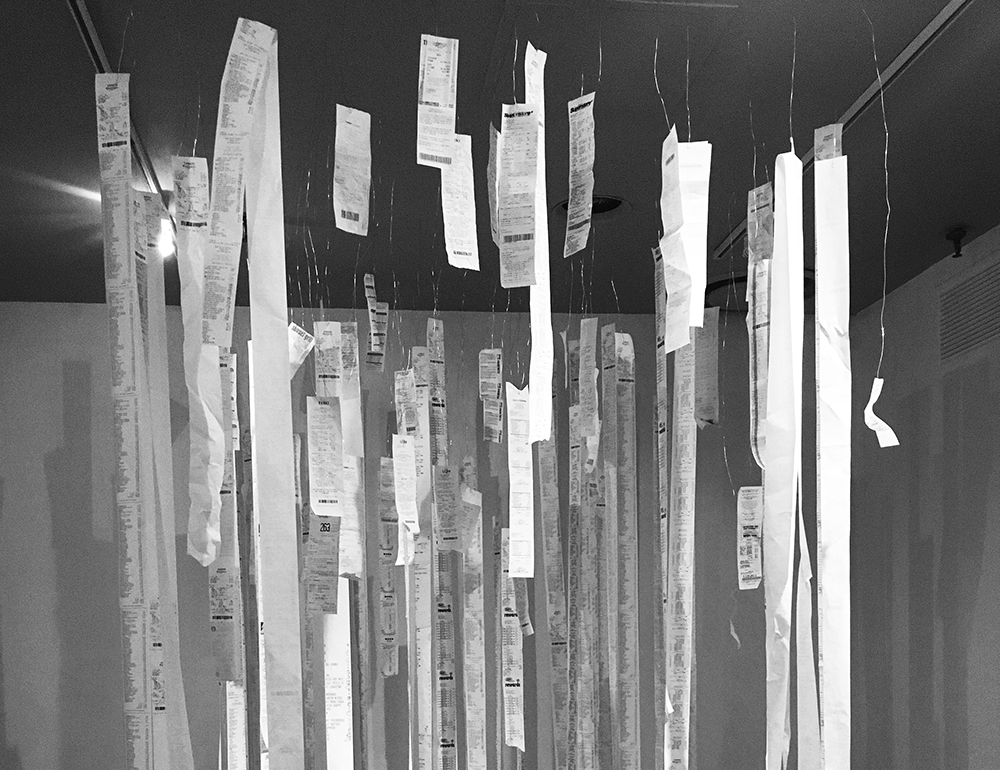Josh Abraham | Contributor
Featured image: Upper-level visual arts students Becca McGlashan and Sam Lowen recast the mundane as interesting. | Courtesy of Sam Lowen
One man’s trash is another man’s treasure. This saying seems to gain a new meaning when observing Becca McGlashan and Sam Lowen’s art on display at the Special Projects Gallery at York. Between September 26 and 29, visitors were invited to witness everyday and insignificant items transformed into meaningful art.
Created primarily from sticky notes, receipts and forgotten iPhone pictures, McGlashan and Lowen’s art focuses on memory and object hoarding by making unmemorable things worth a second glance.
“We write things down because we are anxious to remember, but once they have served their purpose, we throw them away,” says McGlashan. Going by this theme, her art is comprised of sticky notes collected from her friends. Organized together, they form a picture of the various human mentalities, from the profane to simple reminders or messages. Relationships between parents and their children, young college friends and even with one’s own self are displayed through the language used. These sticky notes that would have been treated as garbage now serve as a useful source of insight into the human psyche and what people deem worthy to write down.
A significant subject of McGlashan’s work is a series of observations about an elderly, slightly eccentric lady named Bernice. One does not need to read the notes to comprehend the sorrow behind them, which document Bernice’s sanity slowly slipping away. The written scrawl does an adequate job of projecting the tone, even without the contents. The installation uses what used to be a memory aid, as the subject was suffering from progressive memory loss.
To complement McGlashan’s rather literal style of art, Lowen’s paintings add an air of mystery to the exhibition with some very obscure pictures printed on receipt paper. Receipts and photographs taken from her destroyed iPhone create Lowen’s art, a blend of two mundane items forming a host of visceral pictures. The photos are manipulated, sometimes burned or rotated, to add to the abstract feeling spectators undergo.
One such installation is a picture of a road crossing with people present, printed on receipt paper. The picture is blacked out by a circular halo in the middle from burning. Many of her burned pictures seems to show the desperation in trying to remember something that is often blacked out in our memory, leaving behind small bits of memory with gaping holes.
The concept of printing them on receipt paper, usually used to record everyday transactions, and elevating them to something that exudes a sense of wonder, turns the ordinary into the extraordinary.
Perhaps the most common of items, receipts seemed to dominate the exhibition with one art installation comprising of receipts stapled together and hung from the walls. Even the artist statement was comprised of receipts of the purchases necessary to put together the exhibition.
Overall, the exhibition served as a great reminder of the pragmatic application of arts as a form of expression of our pensive side. It demonstrates how art can showcase the most human characteristics by romanticizing seemingly trivial objects and presenting them in a new light.


